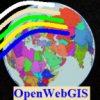Search the Community
Showing results for tags 'JavaScript'.
-
Hello All, I am new to web GIS application development and i'm looking for a good opensource web GIS client/server which provides a great selection of tools, widgets, features and functionality. I know that Openlayers is a very popular web GIS client but i found that Mapfish, which uses Openlayers, has more tools and features. Same with Mapbender which also uses OpenLayers. I would like some guidance regarding the best combination of opensource software that i can use for Web GIS Development: GIS client, GIS server (GeoServer or Mapserver? etc) and any other additional tools or extensions that can improve functionality (e.g. ExtJS4, GeoExt). I am familiar with python programming, VB and a little bit of javascript. So any opensource tools that use these programming languages will be easier for me to learn. Many Thanks Demis
- 2 replies
-
- Openlayers
- web gis
-
(and 5 more)
Tagged with:
-
When you create your maps with the help of online services, sometimes you surely want not only to see your data on the map, but also to make at least some mathematical analysis. For example, to create a chart reflecting the change in the data and to estimate how much your data is correlated in some attributes and to construct a linear regression equation. Not every online service for maps creation provides such an opportunity. In OpenWebGIS you can do it. In this article, we'll start talking about how you can do it yourself in your service using JavaScript language.Please read more about it: http://openwebgisystem.blogspot.ru/2015/08/maps-hurricanes-and-linear-regression.html
-
- 2
-

-
- OpenWebGIS
- JavaScript
-
(and 1 more)
Tagged with:
-
Hello, all: I have to use a map interactively: the user clicks on a position, and a new graph comes up with information about that point. I have to use R to generate the secondary graphs (not a map), but the first one (a map) is already created. So, I think that the best solution is to use the SpiderMoneky package to comunicate between R and JavaScript. Is this a good idea?. But now the problem: I coded the following html page: <html> <head> <script src="jquery.min.js"></script> <script src="raphael-min.js"></script> <script src="kartograph.min.js"></script> <script type="text/javascript"> function loadMap(){ var map = kartograph.map('#map', 600, 0); map.loadMap('map.svg', function() { map.addLayer('page'); }); } </script> </head> <body onLoad="loadMap()"> <div id="map"></div> </body> </html> The file map.svg can be downloaded from here. But the code above, doesn't display anything. However, if I use the this file instead, and change the code accordingly (map.svg -> DEU.svg and page -> admin1) it is correctly displayed. Perhaps there is a difference between the two files that makes necessary to write some other commands in order to load the first one (map.svg) correctly. Does anybody know the reason for Kartograph.js to not to display map.svg?. Is theer a better approach to this problem (interactive map in R)?. Thaks a lot in advance.
-
- javascript
- svg
-
(and 1 more)
Tagged with:
-
Hi Gis Area ! I'm Chris, co-founder @Maperial, providing a freshly baked free JavaScript API to build maps for web applications. We're still completing the API, but you may try this out yet, and let us know where to focus first on the dev. Quick sum up of what you may do so far : - Use a whole set of basemaps - Add WMS - Use Dynamical and Heatmap Data - Customize your layers' fusion find demos and code on www.maperial.com : don't wait to try this out, I'm eager to see your tests and read your thoughts ! Chris
-
- 2
-

-
- javascript
- map
-
(and 2 more)
Tagged with:
-
Kartograph is a simple and lightweight framework for building interactive map applications without Google Maps or any other mapping service. It was created with the needs of designers and data journalists in mind. Actually, Kartograph is two libraries. One generates beautiful & compact SVG maps; the other helps you to create interactive maps that run across all major browsers. Kartograph.py A powerful Python library for generating beautiful, Illustrator-friendly SVG maps. Renders vector maps from shapefiles and PostGIS Compact SVGs using Visvalingam simplification Stores metadata in data attributes Built on top of GDAL/OGR and shapely Licensed under AGPL Documentation http://kartograph.org/docs/kartograph.py/ Git https://github.com/kartograph/kartograph.py Kartograph.js A JavaScript library for creating interactive maps based on Kartograph.py SVG maps. Easy to use: create an interactve map within minutes. Runs 100% stand-alone. No server needed. Gracefully degrades to Internet Explorer 7+ Built on top of Raphaël and jQuery Licensed under LGPL Documentation http://kartograph.org/docs/kartograph.js/ Git https://github.com/kartograph/kartograph.js
- 2 replies
-
- 2
-

-
- Python
- JavaScript
-
(and 1 more)
Tagged with:
-
Polymaps is a JavaScript library for generating “slippy” maps in the style of Google Maps, Modest Maps, CloudMade and OpenLayers. Most mapping libraries focus on 256×256-pixel image tiles, with only limited support for dynamic overlays such as county boundaries and point clouds. These libraries assume that data needed to produce the desired overlay can be loaded into memory all-at-once, making it difficult to visualize large datasets. Furthermore, while image tiles automatically adjust in resolution as the map zooms in or out, the overlay resolution remains constant; this greatly limits multi-scale exploration of data, as the resolution must be fixed either for macro- (e.g., state-level) or micro- (e.g., block-level) observation. The goal of Polymaps is to better support rich, large-scale data overlays on interactive maps by extending the tile metaphor to vector graphics: in addition to standard image tiles, Polymaps supports vector tiles that are rendered with SVG. The vector geometry is loaded as GeoJSON via asynchronous XMLHttpRequest; Point geometry objects are rendered as SVG circle elements, Polygons as paths, and so on. By loading geometry at known tile boundaries, requests can be issued efficiently on-demand by the client, and responses trivially cached on the server. When the user zooms in, geometry can be seamlessly refined to show greater detail, while on zoom out, geometry can be simplified to improve performance. Few examples, http://polymaps.org/ex/ Documentation http://polymaps.org/docs/ Download http://github.com/simplegeo/polymaps/zipball/v2.5.1 Git https://github.com/simplegeo/polymaps
-
Familiar with Openlayers but needed a more lightweight solution? Try Leaflet as your portrayal service comrades ^^ http://leafletjs.com/
- 4 replies
-
- 1
-

-
- Leaflet
- javascript
-
(and 3 more)
Tagged with:




